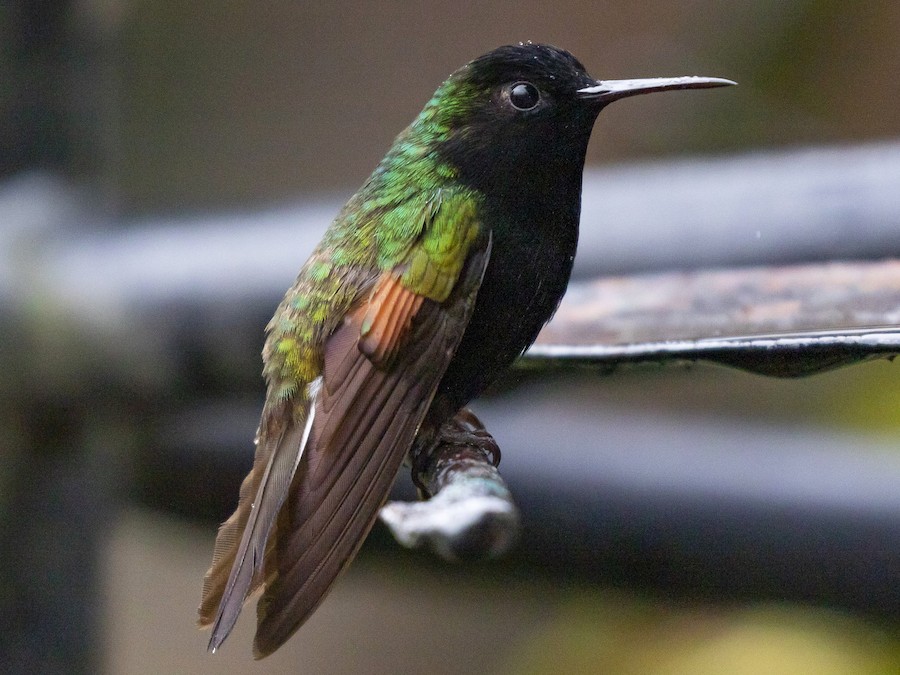Introduction
Prepare to be enchanted by the dazzling world of Black-bellied Hummingbirds! These tiny marvels of nature, with their iridescent plumage and incredible aerial abilities, captivate bird enthusiasts and casual observers alike. In this comprehensive guide, we’ll dive deep into the life, habits, and conservation of these remarkable creatures. Whether you’re a seasoned birdwatcher or simply curious about these feathered jewels, you’re about to embark on an exciting journey of discovery. By the end of this article, you’ll have a newfound appreciation for Black-bellied Hummingbirds and the crucial role they play in our ecosystem.
What Are Black-bellied Hummingbirds?
Black-bellied Hummingbirds (Eupherusa nigriventris) are a stunning species known for their distinctive appearance and agile flight. These tiny birds measure just 3.5 to 4 inches in length and weigh a mere 2.5 to 3 grams – about the weight of a penny!
Physical Characteristics:
-
Metallic green upper parts
-
Black belly (as their name suggests)
-
White undertail coverts
-
Males have a brilliant blue throat patch
Their habitat primarily spans the humid montane forests of Costa Rica and western Panama, typically at elevations between 700 to 2000 meters above sea level. These agile flyers are adapted to life in the forest canopy, where they play a crucial role in pollination.
One of their most remarkable adaptations is the ability to hover in mid-air and fly backwards – a feat achieved by rotating their wings in a figure-eight pattern up to 80 times per second!
Insert Image Here: Close-up of a Black-bellied Hummingbird showcasing its vibrant colors and hovering flight
The Diet of Black-bellied Hummingbirds
Black-bellied Hummingbirds have a high-energy lifestyle that demands a specialized diet. Their primary food sources include:
-
Nectar from flowers
-
Small insects and spiders
-
Tree sap (occasionally)
These tiny birds have incredibly fast metabolisms, requiring them to feed every 10-15 minutes and visit hundreds of flowers each day. Their long, specialized beaks and brush-tipped tongues are perfectly adapted for extracting nectar from deep within flowers.
To attract Black-bellied Hummingbirds to your garden, consider planting these nectar-rich flowers:
| Flower Type | Scientific Name | Bloom Color |
|---|---|---|
| Fuchsia | Fuchsia spp. | Red, Pink |
| Trumpet Flower | Brugmansia spp. | White, Yellow, Pink |
| Heliconia | Heliconia spp. | Red, Orange |
| Passion Flower | Passiflora spp. | Purple, Red |
Remember, while artificial feeders can supplement their diet, natural food sources are always preferable for their overall health and the ecosystem’s balance.
Breeding and Nesting Habits
The breeding season for Black-bellied Hummingbirds typically occurs between December and May, coinciding with the abundance of flowering plants in their habitat.
Male Black-bellied Hummingbirds put on spectacular courtship displays to attract females. These displays often involve intricate aerial maneuvers, including steep dives and figure-eight patterns that showcase their agility and brilliant plumage.
Once a female selects a mate, she takes on the responsibility of nest building and chick-rearing. The nest is a marvel of avian architecture:
-
Size: Approximately 1 inch in diameter
-
Construction: Made from plant fibers, moss, and lichens
-
Location: Usually on a thin branch or leaf, 3-20 feet above the ground
-
Camouflage: Outer layer often decorated with lichen to blend with surroundings
The female typically lays two tiny, white eggs, each about the size of a coffee bean. Incubation lasts about 15-18 days, during which the female diligently tends to her eggs, leaving only for brief feeding periods.
Insert Image Here: Black-bellied Hummingbird nest with two tiny eggs, showcasing its intricate construction
Conservation Status and Threats
While Black-bellied Hummingbirds are not currently listed as endangered, they face several threats that could impact their population in the future:
-
Habitat loss due to deforestation
-
Climate change affecting flowering patterns
-
Use of pesticides reducing insect prey availability
Conservation efforts are crucial to ensure the long-term survival of these beautiful birds. Here’s how you can help:
-
Support organizations working to protect montane forests in Costa Rica and Panama
-
Reduce your carbon footprint to mitigate climate change effects
-
Create hummingbird-friendly gardens with native, nectar-rich plants
-
Avoid using pesticides in your garden
By taking these steps, we can all contribute to the preservation of Black-bellied Hummingbirds and their vital role in forest ecosystems.
How to Observe Black-bellied Hummingbirds in the Wild
For bird enthusiasts eager to spot these elusive beauties, here are some tips for successful observation:
-
Best Locations:
-
Monteverde Cloud Forest Reserve, Costa Rica
-
La Amistad International Park, Panama/Costa Rica border
-
-
Optimal Times:
-
Early morning (6-9 AM) and late afternoon (3-6 PM)
-
During the dry season (December to April) when flowering is at its peak
-
-
Equipment and Techniques:
-
Binoculars with close focus capability (8×42 or 10×42 recommended)
-
A field guide specific to Central American birds

-
Wear muted colors to blend with surroundings
-
Move slowly and quietly to avoid startling these sensitive birds
-
Remember to respect the birds’ habitat and follow all local guidelines for wildlife observation.
Frequently Asked Questions
How long do Black-bellied Hummingbirds live?
Black-bellied Hummingbirds typically live 3-5 years in the wild. However, some individuals have been known to reach up to 12 years of age under optimal conditions.
Can Black-bellied Hummingbirds fly backwards?
Yes! Black-bellied Hummingbirds, like all hummingbirds, can fly backwards. This unique ability, along with hovering and flying upside down, is made possible by their specialized wing structure and flight muscles.
What’s the difference between male and female Black-bellied Hummingbirds?
Male Black-bellied Hummingbirds have a more vibrant appearance with a distinctive blue throat patch (gorget) and a darker black belly. Females are generally duller in color, lacking the blue gorget and having a lighter, grayish-black belly.
Conclusion
The Black-bellied Hummingbird is truly a marvel of nature, embodying beauty, agility, and ecological importance in one tiny package. From their striking appearance to their crucial role in pollination, these birds are a testament to the wonders of biodiversity in our world.
As we’ve explored their unique characteristics, diet, breeding habits, and conservation needs, it’s clear that protecting these remarkable creatures is not just beneficial – it’s essential. By appreciating and safeguarding Black-bellied Hummingbirds, we contribute to the preservation of entire ecosystems.
We encourage you to continue learning about these fascinating birds and to share your knowledge with others. Whether it’s creating a hummingbird-friendly garden, supporting conservation efforts, or planning a birdwatching trip to Costa Rica, every action counts. Let’s work together to ensure that future generations can also marvel at the beauty of the Black-bellied Hummingbird in the wild.
Hummingbird Resources
U.S. Fish and Wildlife Service – Hummingbird Conservation
This site offers detailed information about various hummingbird species, their habitats, and conservation efforts. It also provides resources on how to protect these fascinating birds.
National Park Service – Hummingbird Resources
The National Park Service offers insights into hummingbird species found in national parks, their behaviors, and their role in ecosystems, along with tips for observing them.
Smithsonian National Museum of Natural History – Birds: Hummingbirds
This resource provides educational materials on the role of hummingbirds in pollination and biodiversity, backed by scientific research and exhibits from the Smithsonian.



